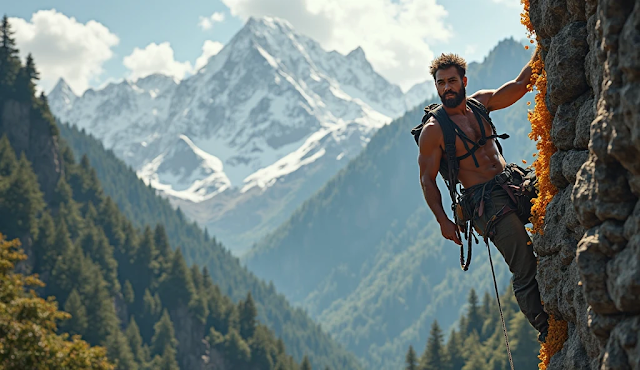Mount Everest, the world's highest peak at 8,848.86 meters (29,031.7 feet), has long been a symbol of human ambition and endurance. However, climbing Everest is an incredibly dangerous endeavor, and not everyone who attempts the summit returns. Over the years, many climbers have lost their lives on the mountain, and some bodies have never been recovered. Here’s a detailed look at the statistics and stories behind those who never returned from Mount Everest.
How Many People Have Died on Mount Everest?
As of October 2023, over 330 people have died on Mount Everest since the first recorded attempts in the early 20th century. The exact number of deaths varies slightly depending on the source, but the Himalayan Database, which tracks climbing expeditions in the region, is the most reliable reference.
Total Deaths: Approximately 330+
Bodies Recovered: Around 200+
Bodies Still on the Mountain: Estimated 120-130
This means that about one-third of the climbers who died on Everest have never been brought back. Their bodies remain on the mountain, often serving as grim landmarks for future climbers.
Why Are Bodies Not Recovered from Everest?
Recovering bodies from Mount Everest is extremely challenging due to the following reasons:
Extreme Altitude: At high altitudes, the lack of oxygen makes physical exertion incredibly difficult. Carrying a body down the mountain requires significant manpower and resources.
Harsh Weather Conditions: Sudden storms, freezing temperatures, and high winds make recovery missions dangerous.
Cost: Recovering a body can cost tens of thousands of dollars, and many families or expeditions cannot afford the expense.
Risk to Rescuers: Recovery missions put the lives of rescuers at risk, as they must navigate treacherous terrain and extreme conditions.
Preservation: The cold, dry environment of Everest naturally preserves bodies, making them appear almost unchanged even decades later.
Famous Cases of Climbers Who Never Returned
Several climbers who perished on Everest have become well-known due to their stories or the visibility of their bodies. Here are a few notable examples:
1. George Mallory (1924)
George Mallory was one of the first climbers to attempt Everest. He disappeared during his 1924 expedition, and his body was not found until 1999. It remains unclear whether he and his climbing partner, Andrew Irvine, reached the summit before their deaths.
2. "Green Boots" (1996)
One of the most famous landmarks on Everest is the body of an unidentified climber, nicknamed "Green Boots" due to his green footwear. Believed to be Tsewang Paljor, an Indian climber who died in 1996, the body served as a grim marker for climbers on the Northeast Ridge route for years. In recent years, the body has been moved out of view.
3. David Sharp (2006)
British climber David Sharp died near the "Green Boots" cave in 2006. His death sparked controversy, as many climbers passed him while he was still alive but unable to help due to the extreme conditions.
4. Hannelore Schmatz (1979)
Hannelore Schmatz, a German climber, died on her descent in 1979. Her body remained visible on the mountain for years, leaning against her backpack, until strong winds eventually blew it off the edge.
5. Scott Fischer and Rob Hall (1996)
During the infamous 1996 Everest disaster, eight climbers died in a single day due to a sudden storm. Scott Fischer and Rob Hall, both experienced guides, were among the victims. Their bodies were left on the mountain.
The Death Zone and Its Dangers
The "Death Zone" refers to altitudes above 8,000 meters (26,247 feet), where oxygen levels are insufficient to sustain human life for extended periods.
Most deaths on Everest occur in this zone due to:
Altitude Sickness: Lack of oxygen can lead to conditions like High Altitude Pulmonary Edema (HAPE) or High Altitude Cerebral Edema (HACE).
Exhaustion: The physical toll of climbing at high altitudes is immense.
Falls: Steep, icy slopes and crevasses pose significant risks.
Avalanches: Sudden avalanches can bury climbers under snow and ice.
Hypothermia: Freezing temperatures can lead to fatal hypothermia.
Efforts to Recover Bodies
While many bodies remain on Everest, there have been efforts to recover some of them, especially in cases where they pose a hazard to climbers or are located in highly visible areas. For example:
In 2017, the body of "Green Boots" was moved out of view to respect the climber’s memory and reduce the psychological impact on other climbers.
In 2019, a team recovered the bodies of four climbers from the "Death Zone," a rare and risky operation.
The Ethical Debate
The presence of bodies on Everest has sparked ethical debates:
Respect for the Deceased: Some argue that leaving bodies on the mountain is disrespectful to the deceased and their families.
Practical Challenges: Others point out the immense difficulty and risk involved in recovering bodies.
Environmental Impact: The mountain is increasingly littered with trash and human remains, raising concerns about its environmental preservation.
Conclusion
Mount Everest is a place of both triumph and tragedy. While thousands of climbers have successfully reached its summit, over 330 have lost their lives in the attempt. Many of these climbers remain on the mountain, their bodies serving as a sobering reminder of the risks involved in conquering the world’s highest peak. As climbing technology and safety measures improve, the hope is that fewer lives will be lost, and the mountain will continue to inspire awe and respect for generations to come.









0 Comments